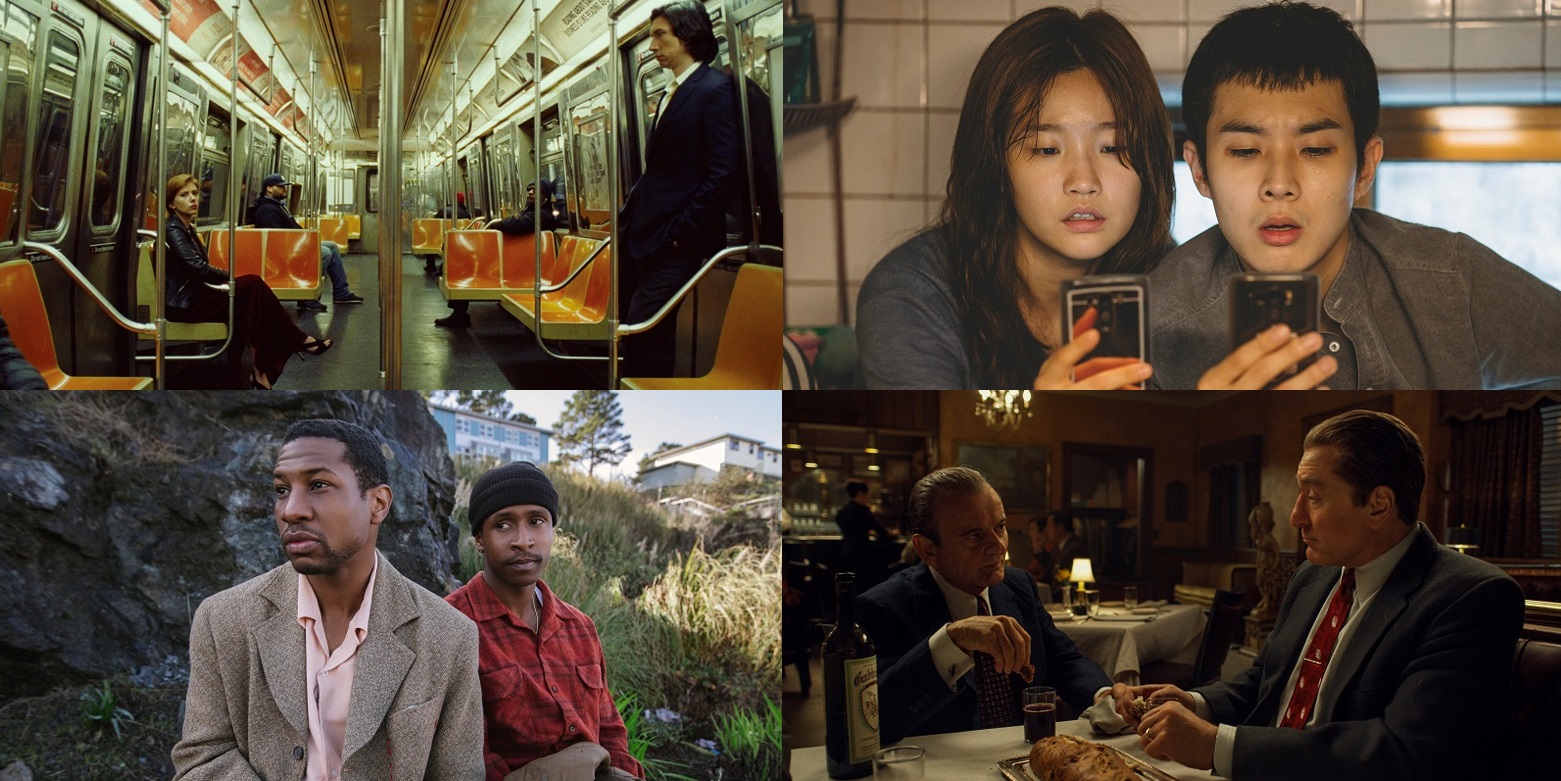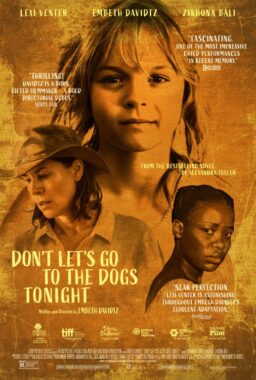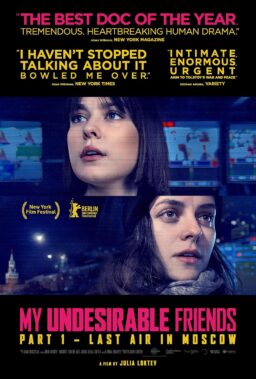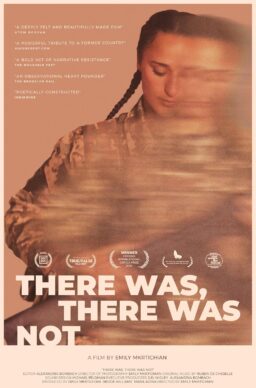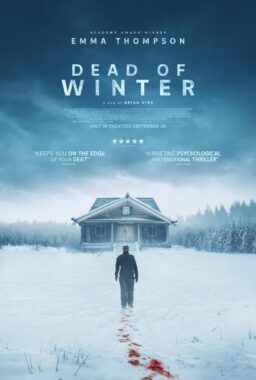The decade ended with one of its best years in film, a 12-month period filled with unique, personal visions across the spectrum of genre and budget. Some of our greatest filmmakers returned with work that felt like commentaries on their entire careers while new voices were added to the cinematic conversation. One of the things that makes 2019 so startlingly good is the diversity of films from it that we loved. How do you compare a daring horror film to an epic gangster saga to an intimate story of gentrification to a landmark LGBT romance? Rather than look for themes this year, it’s even more rewarding to consider how different these 20 films are from one another, hailing from all over the world and standing tall.
About the rankings: We asked our regular film critics and assistant editors to submit top ten lists from this great year, and then consolidated them with a points system resulting in the list below, with a new entry for each awarded film. We’ll publish each critic’s individual list on Friday. Come back for more.
Runner-ups: “Ad Astra,” “Apollo 11,” “Black Mother,” “The Farewell,” “A Hidden Life,” “High Life,” “Little Women,” “Long Day’s Journey into Night,” “Midsommar,” and “The Nightingale“

10. “Portrait of a Lady on Fire”
No list of my favorite filmmakers in world cinema is complete without French auteur Céline Sciamma. In all three of her previous feature-length directorial efforts, which she has referred to as an unofficial trilogy, Sciamma has displayed an unparalleled eye for capturing the complicated dynamics between women and their struggle to define themselves despite societal strictures. Her young heroines consistently subvert gendered tropes, imitating the behavior of others as a half-step toward forming their own identities, as when the 10-year-old in “Tomboy” practices spitting in order to present as a boy, or when a macho crew of football players in “Girlhood” reveal themselves to be female.
In some ways, Sciamma’s long-awaited fourth feature is a continuation of her 2007 debut film, “Water Lilies,” about the repressed desires between a slender brunette (Paulina Acquart) and an alluring blonde (Adèle Haenel). Here, Haenel plays Héloïse, a reluctant bride-to-be who finds herself falling for the artist, Marianne (Noémie Merlant), assigned to paint her portrait. In a rapturous sequence set in the woods, the pair come upon various other eighteenth century women inhabiting their small island community in Brittany. Exuding the same excitement of the friends in “Girlhood” when they lip-synced to Rhianna’s “Diamonds,” the islanders’ voices rise in unison as they begin to perform a spellbinding a cappella number that literally sets the screen ablaze. It’s the latest unforgettable instance of Sciamma’s signature motif, namely the synchronicity practiced by those who wish to join as one, whether it be swimmers, allies, or lovers. (Matt Fagerholm)

9. “The Last Black Man in San Francisco”
Joe Talbot’s multi-layered, singular directorial debut “The Last Black Man in San Francisco” tells a story that is endemically American—of how the power of a select few dehumanizes the less privileged, leaving the displaced with an ephemeral definition of home. In this chapter, Jimmie (Jimmie Fails) and Montgomery (Jonathan Majors) stand before a Victorian home that once belonged to Jimmie’s grandfather, and has since been swallowed up by gentrification. The movie is inspired by a true love story between Fails and a house (according to Fails’ words in the press notes), and that of his friendship with Talbot (Fails has a story credit).
Other lives emerge in Talbot’s film, from tender supporting performances and Jona Tochet’s production design: blind Grandpa Allen’s cluttered apartment; Aunt Wendy’s open lawn and wide spaces, far removed from the big city; Mike Epps’ busted car, adorned in Christmas lights, shown in a stolen moment to be where he ends up at night. Among its many audacious feats, Talbot and Rob Richert’s script concerns weighty, urgent issues—black masculinity, code-switching, homelessness—but keeps them genuine in the movie’s storybook air.
Talbot introduces himself as a masterful world-builder, making the film feel like Jimmie’s beloved house—precise, ornate. Emile Mosseri’s woodwind-heavy score elevates the landmarks that cinematographer Adam Newport Berra captures with great affection, all of it recalling the home’s warm wooden interiors. With each sequence cut by David Marks to stand as its own short film, it has an assured pacing that is meant to be explored, and lived in.
“The Last Black Man in San Francisco” is too full of life to be simply angry about the forces arrayed against Jimmie, and tenderness and humor arise from its gorgeous heart. Talbot’s film becomes sentimental in the most cinematic way—while it mourns an urban landscape losing its soul, it just as intensely celebrates identity and friendship. It’s the first that we’ve heard from Fails and Talbot, and yet “The Last Black Man in San Francisco” has the wisdom of a tale that has been lived with for decades. (Nick Allen)

8. “The Souvenir”
In Joanna Hogg’s films, the camera frame is a proscenium arch, with actors moving in and out of the space, talking off-screen, sometimes having full arguments off-screen. Hogg rarely cuts in for a close-up. Although the camera rarely moves, the effect achieved is not static. On the contrary. Hogg’s approach is a strange alchemy of distance and intimacy, on display in “Unrelated” (2007), “Archipelago” (2010) and “Exhibition” (2014), and taken to a new level in the frankly autobiographical “The Souvenir,” one of the best films of the year.
Honor Swinton-Byrne plays Julie, a young film school student struggling to find her way as an artist, all while experiencing her first serious love affair with an older man named Anthony (Tom Burke). Anthony is exciting and cultured, pushing her to think deeper about her art. He is also a junkie, and Julie is too naive at first to figure it out. “The Souvenir,” punctuated by perfectly-chosen needle-drops, gets deeper with each re-watch. Even the title has layers of meaning, creating a sense of texture and thematic richness so missing from other films.
It’s a story of transformation. Transformation is not neat, linear, or controllable. Being in love bleeds into every aspect of life. It’s the most important thing. But art is also the most important thing. Being free to make the art you want to make is paramount. Compartmentalization is not possible. At a certain point, it all merges together.
“The Souvenir” is a Portrait of the Artist as a Young Woman, Joycean in scope and sensory detail, a collage of the poems, art, songs, clothes, Powell and Pressberger films, moods, that helped shape Hogg, helped make her one of the most interesting and personal filmmakers working today. Hogg is already working on a sequel. Now that’s a franchise I’m excited about. (Sheila O’Malley)

7. “Us”
I see new details and ideas every time I watch or read about “Us”; I’m especially taken with writer/director Jordan Peele’s densely layered and lavishly realized scenario (previously written about in this earlier piece and this one, too). This time, “Us” is about historical erasure and inherited trauma: wannabe-bourgie black parents Gabe and Adelaide Wilson (Winston Duke and Lupita Nyong’o) respectively either remake their kids in their image, or flat-out smother them. Because the Wilsons, unlike their lily-white, boats-n-vodka friends Kitty and Tyler (Elisabeth Moss and Tim Heidecker), are defined more by their uneasy grip on time-share reality than their inability to assimilate.
So while Gabe sulks every time he’s called out for over-indulging himself, Adelaide fusses and clings to young Jason (Evan Alex), because her mask-wearing son is just as angry as she is—he’s just learning how to hide it better. Almost everything that Adelaide does is her way of denying her responsibility for Red (Nyong’o), her revenge-obsessed, moloid ballerina doppelgänger. But Jason sees his mother as she unravels, and he ultimately understands her, because he has to do the same thing she tried to years ago when he tries (and succeeds) in destroying a monstrous part of himself that he just became aware of.
“Us” contains multiple overlapping narratives inside of its rich, Serling-inspired story. Peele’s impressive sophomore feature is never just about what it’s about, even if it’s always about what it’s about. Peele’s left us with the same questions that we had after “Get Out”: how do you top that, and when exactly will you do it? (Simon Abrams)
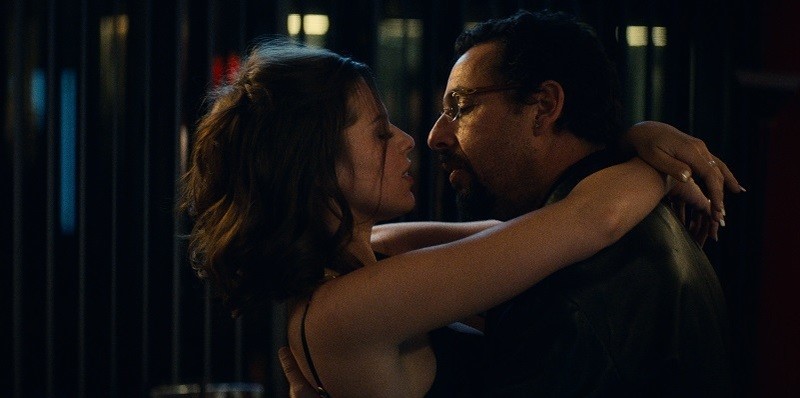
6. “Uncut Gems”
Benny and Josh Safdie’s urban thriller is another hyperventilating real-world psychological meltdown, in a mode that this brother team of filmmakers has turned into their specialty. But this one is so intense that it makes their last effort, the relentless “Good Time,” seem like a spa day in comparison. Adam Sandler stars as Howard Ratner, a New York City jeweler and compulsive gambler who has been endlessly refinancing the same debts, betting ever-larger sums while hoping for a monster payout that will put him in profit again. He’s a compulsive gambler in his private life, too, owing much of the debt to his brother-in-law (Eric Bogosian), keeping a mistress on the side (his employee Julia, played by Julia Fox) and thinking he’s being discreet even though his wife (Idina Menzel) and daughter (Noa Fisher) have no illusions about checked-out and scummy he is. The eponymous rock would seem to hold his salvation, but Howard, being Howard, can’t let a thing be a thing. He has to keep trying to amplify its power and payout, inviting violent retribution from the people he owes money to, and public humiliation by the pro basketball star (Kevin Garnett, in a marvelous and altogether surprising performance) who treats the gem with mystical reverence. What looks on paper like yet another riff on the hell-is-your-own-demons indie flick (see the likes of “The Gambler,” “Mississippi Grind,” and “Bad Lieutenant“) dazzles thanks to the Safdies’ control of momentum, their ability to dole out ever-more-devastating character details and plot twists, and the cast’s intense yet unfussy performances—Sandler’s in particular; only a man experienced at wielding power could so delicately portray the emotional dynamics of an arrogant man forced to humble himself. The science-fiction like opening sequence, a psychedelic trip through the uncut gem that morphs into camera footage of the interior of Howard’s bowels during a colonoscopy, tells you what you’re in for: a medically exact diagnosis of an asshole, seen from the inside out. (Matt Zoller Seitz)
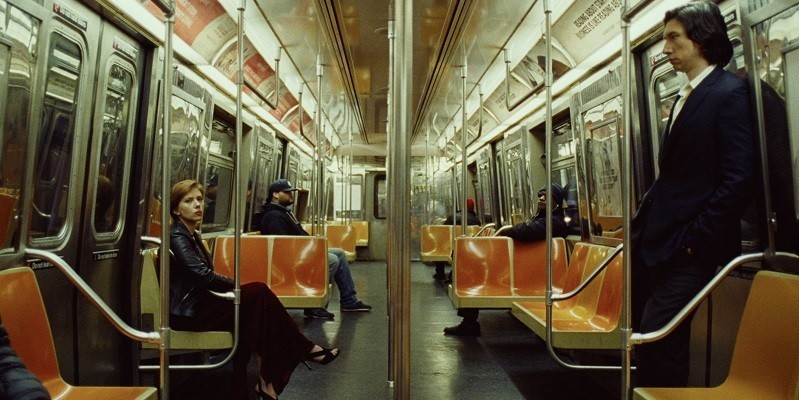
5. “Marriage Story”
“Marriage Story” is to divorce what Elisabeth Kubler-Ross’ theory is to death—a meticulous, insightful, and deeply compassionate look at the stages of grief. Divorce is a death of a kind, the end of a relationship, of happily ever after, of the dream of being eternally understood and wanted by the person who has seen us at our most vulnerable. And it is worse than death in one way because the person is not gone, leaving us to figure out a completely new way to define the relationship.
Writer/director Noah Baumbach shows us that like the Kubler-Ross stages, divorce means cycling in shuffle mode through denial (“we don’t need lawyers; we can be civil and cooperative”), bargaining, depression, and anger, sometimes mingled. Baumbach’s two best movies are bookends, both based on his own experience of divorce, first as a teenager seeing the end of his parents’ marriage in “The Squid and the Whale,” and here examining the end of his own. It opens with the couple telling us what they love about each other, an exercise for a therapist helping them separate. And it ends with two performances of Sondheim songs, on opposite sides of the country, as they reach that last stage—acceptance. (Nell Minow)

4. “Pain and Glory”
Like Martin Scorsese’s “The Irishman,” Pedro Almodóvar’s “Pain and Glory” is an old man’s lament crafted by a veteran director casting a wistful eye on his past films. Both films feature actors with whom the director has worked with numerous times, often on their most notable projects. Almodóvar adds a personal touch to his story, however, by casting eight-time collaborator Antonio Banderas as a thinly-veiled version of himself. Banderas plays Salvador, a director whose film, “Sabor” is celebrating the same 32nd anniversary milestone as the third Almodóvar-Banderas pairing, “Law of Desire.” This is just one of several instances of the twisty meta details sprinkled throughout “Pain and Glory,” elements that keep the director’s biggest fans in a state of conspiratorial glee; the intentional similarities inspire numerous thoughts about where the lines of truth and fiction blur, if they do at all. Banderas muddies the waters by subtly taking on some of the physical characteristics of Almodóvar in his superb performance. The side game becomes even more intriguing when several other performers from Almodóvar’s previous films show up, including a mesmerizing Penelope Cruz. Continuing the Felliniesque earthiness he teased from her in “Volver,” Almodóvar casts her as his film’s maternal figure.
“Pain and Glory” is the director’s most mature work, with a newfound seriousness that’s profoundly moving and compelling. But maturity doesn’t mean Almodóvar has retired any of his usual, fun tricks. Instead, he uses them to turn his masterful, complex screenplay into a cinematic mirror where he reflects on the rewrite we often wish we could give ourselves in life. Nowhere is this more telling than in the “play-within-the-film” scene where Alberto (an excellent Asier Etxeandia) performs a monologue ghost-written by Salvador. In the audience is Federico, the subject for whom this play was written. The film’s plot stops for this extended sequence. As Alberto talks and Federico watches, we realize that Almodovar has created a clever simulacrum of cinema—the viewer is Federico, Alberto is Banderas and Almodóvar is Salvador. At first, it feels like a neat parlor trick, but when the final shot of “Pain and Glory” appears, we realize it was also a powerful tribute to the art of emotional storytelling. That final shot is a brilliant sleight of hand by a director at the height of his powers, restructuring everything that preceded it, and the cumulative result is astonishing. (Odie Henderson)

3. “Once Upon a Time … in Hollywood”
Unsatisfied with the way some chapters in history have played out, Quentin Tarantino has used his most recent efforts as a way to enact his own revenge operas. But with “Once Upon a Time … in Hollywood,” our expectations of what we’ve come to expect from these movies are subverted. The movie circles what would become the murder of Sharon Tate (Margot Robbie) and her friends, but it’s almost in the periphery in the ballad between an actor struggling to stay in the spotlight, Rick Dalton (Leonardo DiCaprio), and his trusty stunt man, Cliff Booth (Brad Pitt). All the while, there’s this dangerous sense that something bad is about to happen in the shadow of Charles Manson’s creepy presence. Like any good yarn, the characters and the story represent something more than what’s on the page. What Tarantino gives Tate’s memory is a chance at normalcy, of seeing her snoring in bed, folding clothes, going to the movies by herself, having friends over—the stuff that you and I do without much thinking yet they’re things we don’t often associate with movie stars. In that sense, we think of something that looks more like Dalton’s experience, running into other actors and meandering through large back lots. There’s a romantic streak in Tarantino’s film that idolizes Hollywood and Los Angeles but acknowledges that it’s not always glamorous. There’s a crushing reality in Booth’s arc, the stunt man who’s aging out of work as fast as his actor buddy is losing out on roles. In Hollywood, someone’s always going up to a fancy mansion just as their neighbor is struggling to pay the bills. “Once Upon a Time … in Hollywood” restores a sense of humanity not to just Tate’s story, but to the industry itself. (Monica Castillo)
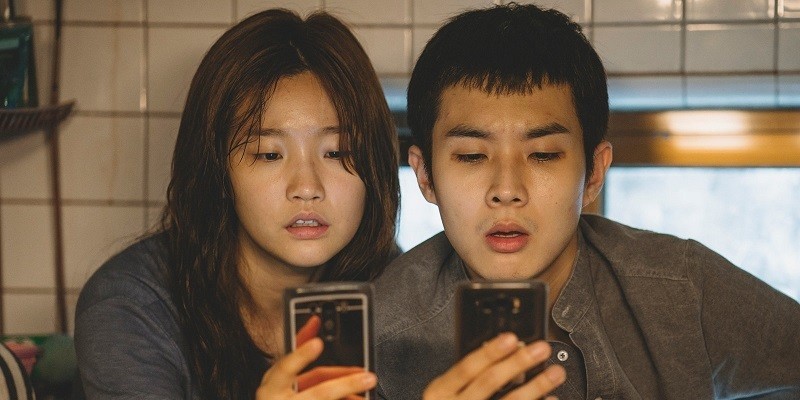
2. “Parasite”
So much of what makes “Parasite” one of the year’s absolute best films can’t be expressed in words. First of all, I wouldn’t dream of spoiling any of its provocative twists and turns. But mostly, this is a film you truly must experience—preferably on the biggest screen you can find—to understand the subtlety and surprise in store from master filmmaker Bong Joon Ho. The Korean auteur has always displayed an expert manipulation of tone; here, in his greatest work yet, he morphs steadily from dark humor to sharp satire to unbearable suspense to outright horror before settling on a final note of wistful sadness. We are with him every stylish, breathless step of the way as we follow the ups and downs of this upstairs/downstairs tale.
“Parasite” tracks the intertwined fates of two families—a father, mother, sister and brother—one rich and the other poor. As the members of the struggling Kim family slyly find ways to insinuate themselves into the lives of the wealthy Parks, they foolishly foster hope that their fortune might change. While Bong’s sympathies are clearly with the have-nots in this equation, he judges neither clan for the choices they make. He’s more interested in exploring the truth of human nature and the inevitable ways in which it plays out.
To that end, he draws universally stunning performances from his strong, eclectic ensemble: the sweetly seductive Park So Dam as the younger Kim child, who cleverly poses as Jessica the “art therapist”; Lee Jeong Eun, who enjoys a huge, showy arc as the Parks’ original housekeeper; and Song Kang Ho, the most heartbreaking of all as the Parks’ trusted driver who dares to dream the biggest dreams.
I could write another entire essay about the house where all this intrigue plays out. Built from the ground up specifically for the film, the monstrous marvel is an all-knowing, all-seeing character unto itself; it’s gorgeous and foreboding at once. But despite the richness of its cultural specificity in status-conscious Seoul, “Parasite” is a damning and all-too relevant parable for our times. See it, then see it again. (Christy Lemire)

1. “The Irishman”
It can be increasingly difficult to step back from controversy and the deafening din of social media to really look at a piece of art on its own terms. Many of the initial reviews of “The Irishman” seemed to focus more on Martin Scorsese’s comments about the MCU, the epic length of the film, the de-aging technology, how much Netflix spent on it, its historical veracity, or the specific line count of its female characters. While some of these issues are relevant to a discussion of the film’s quality, it does seem like the actual critical analysis of “The Irishman” is only now starting to come to the forefront of the conversation. And as we look deeper at this masterpiece, we realize how many layers there are to unpack, each one richer than the next. Scene by scene, performance by performance, theme by theme – this is a film that operates on a different level. It’s the best film of 2019.
Even the very question of what “The Irishman” is about has been up for debate. Those who dismiss it as just another story of violent men from a director who has made some of the most influential films about violent men are purposefully missing the point. For years, Scorsese made films about violent men who faced authorities or death for their violence. But “The Irishman” tells the story of how such a person can dig himself into a hole, left alone and unforgiven. In fact, the whole movie can be distilled into the flashback in which Robert De Niro’s Frank Sheeran remembers making German soldiers dig their own graves, wondering aloud why they keep digging when they know they’re just going to die. We then watch as Frank Sheeran, like so many men, just keeps on digging his own grave for the rest of his violent life.
And yet the true masterstroke of “The Irishman” is that Scorsese isn’t interested in something as simple as a moral message movie about the cost of violence. It’s always there, mostly under the surface, but he’s also willing to make a film that works as a fascinating character piece, giving some of the best actors in history another great performance for their lifetime highlight reels. It’s a film of marvelous detail from Joe Pesci’s body language as he breaks bread to Robert De Niro’s pained eyes as he realizes his life’s greatest failure to just the way that Al Pacino eats a hot fudge sundae. Approached as a statement on masculinity, a commentary on American history, an actor’s showcase with some unforgettable characters, or even as a personal commentary on his own films and legacy—“The Irishman” works from every angle. (Brian Tallerico)
